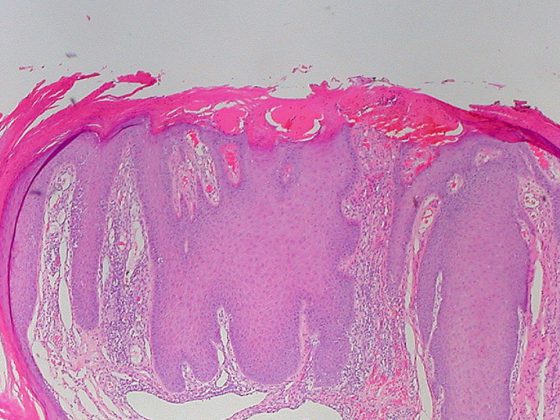Light skin cancers are the most common cancers in fair-skinned people. They occur in at least 200 out of 100,000 people per year in Germany, especially basal cell carcinoma and cutaneous squamous cell carcinoma. Even if the chances of recovery are very good compared to black skin cancer, light skin cancer should not be underestimated. An interview with Prof. Dr. med. Ralf Gutzmer, Minden (Germany).
Basal cell carcinoma and cutaneous squamous cell carcinoma are the most common cancers in fair-skinned people. How is it that light skin cancers are nevertheless so often underestimated?
Prof. Dr. med. Ralf Gutzmer: There are various factors behind the fact that light skin cancers are often underestimated. On the one hand, they develop slowly, often over years, and grow regionally. This means that metastasis to other organs does not occur or only occurs very late. Accordingly, light skin cancer only becomes life-threatening at a late stage. At the same time, however, it has a high morbidity rate, i.e. it causes a high burden of disease. On the one hand, light skin cancer often occurs not just in one place, but in different places, especially in the area of the skin exposed to light, the so-called “field carcinogenesis”. On the other hand, it can significantly reduce the quality of life due to bleeding, oozing or odor development.
What experiences do doctors and hospitals have with patients suffering from light skin cancer?
Older people are often affected, and light skin cancer develops over decades. The slow development is another reason why light skin cancer is often underestimated. In the case of older patients, the question often arises as to whether therapy should still be carried out in view of their age and previous illnesses. This sometimes leads to very difficult situations when patients come to hospitals at an advanced stage, because treatment is necessary and desired due to increasing morbidity despite advanced age and comorbidities.
What are the first signs of light skin cancer? Does early detection screening make sense?
Light skin cancer can manifest itself through scaling, bleeding, oozing and the growth of a nodular skin change that gradually opens up – i.e. ulcerates. Early detection screening makes sense.
What treatment options are there and what are the chances of recovery?
Various local therapies are available for preliminary stages of light skin cancer that are still limited to the outer layers of the skin, such as carcinoma in situ or actinic keratosis. These include icing, laser therapy and various ointment therapies and photodynamic therapy. If a light skin cancer has been diagnosed without a corresponding preliminary stage, there are various treatment options. Surgery is the primary option for invasive basal cell carcinomas and cutaneous squamous cell carcinomas. This cures the majority of tumors if they are removed early.
And if an operation is not possible?
If surgery is not an option, radiotherapy or, in the case of locally advanced or distant metastases, drug therapy are treatment options. If such treatment becomes necessary, it is advisable to consult a certified skin cancer center, as the various treatment methods – surgery, radiotherapy and drug therapy – are weighed up at interdisciplinary tumor conferences and an individual recommendation is made.
In the case of advanced light skin cancer, there is talk of a new era dawning thanks to so-called checkpoint inhibitors. What does that mean?
If a tumor is so advanced that it can no longer be controlled by local measures such as surgery and radiotherapy, the various tumor diseases subsumed under light skin cancer involve comparatively few patients overall. In the special situation of an advanced stage, they should be presented in certified skin tumor centers in corresponding interdisciplinary tumor conferences in order to make an individual therapy recommendation. If drug therapy is recommended, checkpoint inhibitors are often the treatment of choice. They are approved for advanced cutaneous squamous cell carcinomas as well as for advanced basal cell carcinomas that no longer respond to therapy with targeted substances, hedgehog inhibitors such as sonidegib and vismodegib, or where these are not tolerated. Here, checkpoint inhibitors have indeed defined a new era. With good overall tolerability, they lead to long-term tumor regression and long-term tumor control in around 50% of patients with advanced squamous cell carcinoma and around 30% of patients with advanced basal cell carcinoma. In this respect, they have achieved a significant improvement in treatment options.
Not all patients respond to these therapies. What does the further development look like?
We are also continuing to try to further improve the treatment options in studies. Here, too, presentation at a certified skin cancer center is of crucial importance in order to obtain the option of participating in a study and thus a treatment option that goes beyond standard therapy.
Source: «Helle Hautkrebse werden häufig unterschätzt! Erste Anzeichen Schuppung, Blutung, Nässen, knotige Hautveränderungen – Früherkennungs-Screening macht Sinn!», ADO.
InFo ONKOLOGIE & HÄMATOLOGIE 2023: 11(5): 22











